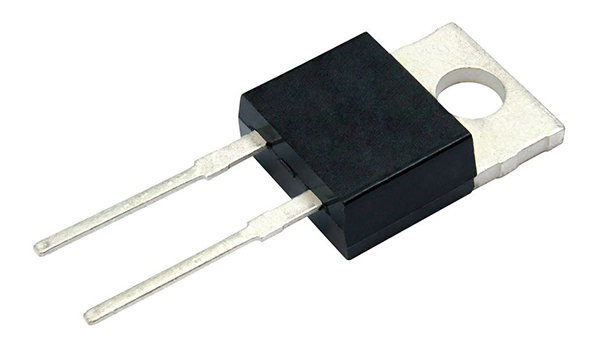

 News and Information
News and Information Knowledge Column
Knowledge ColumnSchottky diodes are widely used in electronic circuits due to their fast switching characteristics and low forward voltage drop. Schottky diodes play an important role in power management, protection circuits, and high-frequency communication equIPMent. However, correctly distinguishing the positive and negative terminals of Schottky diodes is crucial, and today we will talk about how to easily identify them.

1. Structure of Schottky diode
Schottky diode is a diode composed of a combination of metal and semiconductor materials such as silicon or silicon carbide. Its biggest feature is faster response time and lower forward voltage drop than ordinary silicon diodes, which makes it very popular in high-frequency circuits and fast switching applications.
The baSIC structure of a Schottky diode includes a contact surface between a metal and a semiconductor, which is called a "Schottky contact". Unlike the PN junction of traditional diodes, Schottky diodes use metal semiconductor contacts, so their working principle is also different.
2. Positive and negative electrode identification of Schottky diodes
To use Schottky diodes correctly, it is first necessary to understand how to distinguish their positive and negative poles. There are several common identification methods here:
Metal terminal: Schottky diodes typically have two terminals, one is the metal terminal and the other is the semiconductor terminal. The metal end is generally referred to as the 'negative electrode', while the semiconductor end is referred to as the 'positive electrode'. Usually, the metal end is connected to the negative pole of the circuit, while the semiconductor end is connected to the positive pole of the circuit.
Shell identification: The shell of Schottky diodes usually has a label indicating the negative terminal. The negative terminal often has a black stripe or mark on one side of the diode, especially on Schottky diodes packaged in surface mount (SMD).
Directionality: Schottky diodes, like ordinary diodes, have directionality, and current can only flow in one direction. In circuit design, it is necessary to ensure that the positive and negative terminals of the Schottky diode are connected correctly, otherwise it may cause the circuit to malfunction.
3. How to correctly connect Schottky diodes
In practical applications, the connection of Schottky diodes is very simple. We can follow the following steps to ensure proper connection:
Negative pole connected to power supply negative terminal: The negative pole (metal terminal) of the Schottky diode needs to be connected to the negative terminal of the power supply or the negative voltage terminal in the circuit.
Positive pole connected to load: The positive pole (semiconductor terminal) of the Schottky diode should be connected to the load terminal in the circuit or the positive voltage terminal of the power supply.
Ensure unidirectional current flow: During normal operation of Schottky diodes, current can only flow from the positive pole to the negative pole. If the direction is reversed, the Schottky diode will not work and may even be damaged.
4. Advantages of Schottky diodes
After correctly connecting the Schottky diode, it can provide multiple advantages to help improve circuit performance:
Low forward voltage drop: The forward voltage drop of Schottky diodes is usually between 0.2V and 0.45V, which is lower than that of ordinary silicon diodes, making it very suitable for high-performance power supplies and high-frequency applications.
Fast switching speed: Due to its simple structure, Schottky diodes have a very fast response speed in switching operations, making them suitable for high-frequency applications such as radio frequency (RF) circuits and high-speed data transmission equipment.
Low reverse recovery time: Compared with traditional PN junction diodes, Schottky diodes have almost no reverse recovery time (i.e., the diode needs time to recover its state when the current is reversed). This means it can work effectively at very high frequencies.
5. Summary
Schottky diodes play an important role in modern electronic technology, and correctly distinguishing their positive and negative poles is crucial to ensure the normal operation of circuits. By identifying the metal and semiconductor terminals, using casing markings, and connecting them correctly in the direction of current, wiring errors can be effectively avoided.
Fushite Technology is deeply involved in the field of power devices, providing customers with power devices such as IGBT and IPM modules, as well as microcontrollers (MCUs) and touch chips. It is an electronic component supplier and solution provider with core technology.